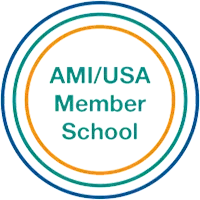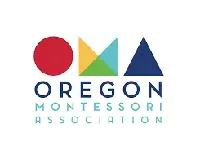Elementary
Overview
The elementary program at Childpeace is built on the foundations of the Children’s House and fosters the ongoing development of the child through social interactions with the community. Fueled by their developmental period for imagination, the children begin to make discoveries in all subject areas including language, math and the sciences. The adults who guide the children are observant, respectful and passionate about leading the children to full engagement in every area of curriculum.
Our Elementary Program includes a
three-year experience in a Lower Elementary classroom for children ages 6 to 9 years old and in an Upper Elementary group for children 9 to 12 years old. This mixed-aged, three-year experience ensures that your child's guide knows him/her deeply and can tailor the curriculum to each person's learning style and interests. It also provides the class with a
stable culture and a community of "elders".
This highlight clip from our 'The Childpeace Experience' video shows Greg, an Elementary guide, talking about our non-traditional, child-led curriculum. The Montessori approach allows for flexibility and adaptability so that the Guides can tailor the lessons to meet the needs of the children. A mixed-ages learning community opens opportunities for all children to learn from each other.
Key Components
Elementary studies build knowledge through an in-depth study of the world and how it works. Most lessons are presented in small group format and assume a collaborative spirit and a social interest in learning in cohesion alongside and from one's peers. Learning and strengthening grade level academic skills in partnership with decision-making, problem-solving and social awareness, are key components of the elementary experience.
Studies are integrated across disciplines that include
geography, biology, history, language, mathematics, science, music, and other forms of
artistic expression. Exploration of each area is augmented by the children, who organize visits beyond the confines of the classroom to gain real-life knowledge from
community resources, such as the library, planetarium, botanical garden, science centre, etc. This approach fosters a feeling of connectedness to humanity and encourages children’s natural desire to make a contribution to the world.
In the Montessori Elementary classroom, the children are given
opportunities to learn to set their own
goals, budget their own time, and appraise their own
results. Our students are aware of and connected to the basic public school requirements and need to be ready for work in their next school environment. We offer the child the
opportunity to explore the curriculum broadly and think of their learning beyond the idea of “required” work. They are “self-starters” who work because of interest and enthusiasm rather than external incentives and sanctions.
Lower Elementary Daily Schedule
| 7:30 - 8:30 AM | Early Morning Care |
|---|---|
| 8:30 - 11:30 AM | Montessori Work Cycle |
| 11:30 AM - 12:15 PM | Lunch |
| 12:15 -1:00 PM | Recess |
| 1:00 - 3:15 PM | Afternoon Work Cycle |
| 3:15 PM | Departures |
| 3:15 - 5:30 PM | After School Care |
Upper Elementary Daily Schedule
| 7:30 - 8:30 AM | Early Morning Care |
|---|---|
| 8:30 - 11:45 AM | Montessori Work Cycle |
| 12:00 - 12:45 PM | Lunch |
| 12:45 -1:30 PM | Recess |
| 1:30 - 3:15 PM | Afternoon Work Cycle |
| 3:15 PM | Departures |
| 3:15 - 5:30 PM | After School Care |
There is a great sense of community within the Montessori classroom, where children of differing ages work together in an atmosphere of cooperation than that of competitiveness. There is respect for the environment and of the individuals within it, which comes from experience of freedom within the community.
-Dr. Maria Montessori






